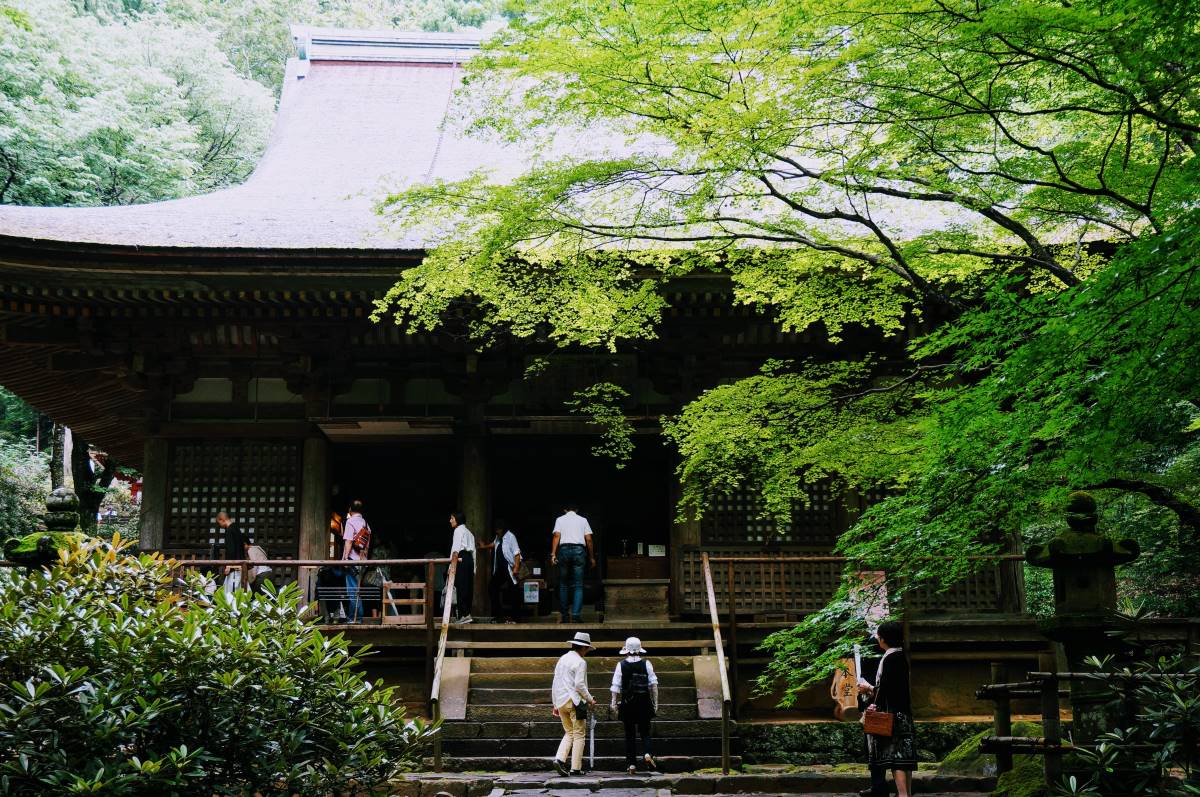
Hello! My name is Miyako, and I was born and raised in Nara, Japan. In this travel journal, I will introduce the breathtaking views and rich history of Murou-ji Temple (室生寺), which is located in Uda City in Nara Prefecture.
Murou-ji Temple is one of the most famous temples in Nara Prefecture, and you can see a lot of Japan’s National Treasures and Important Cultural Properties. Also, you can enjoy beautiful nature harmonious with the long history of the temple.
If you are looking for the access information to Murou-ji Temple, please check on “Murou-ji Temple Travel Guide #1” for the details. On that page, you can also get some information about local shops and special foods that you can find along the approach.
Murou-ji Temple is a Beautiful Mountain Temple in Harmony with Nature
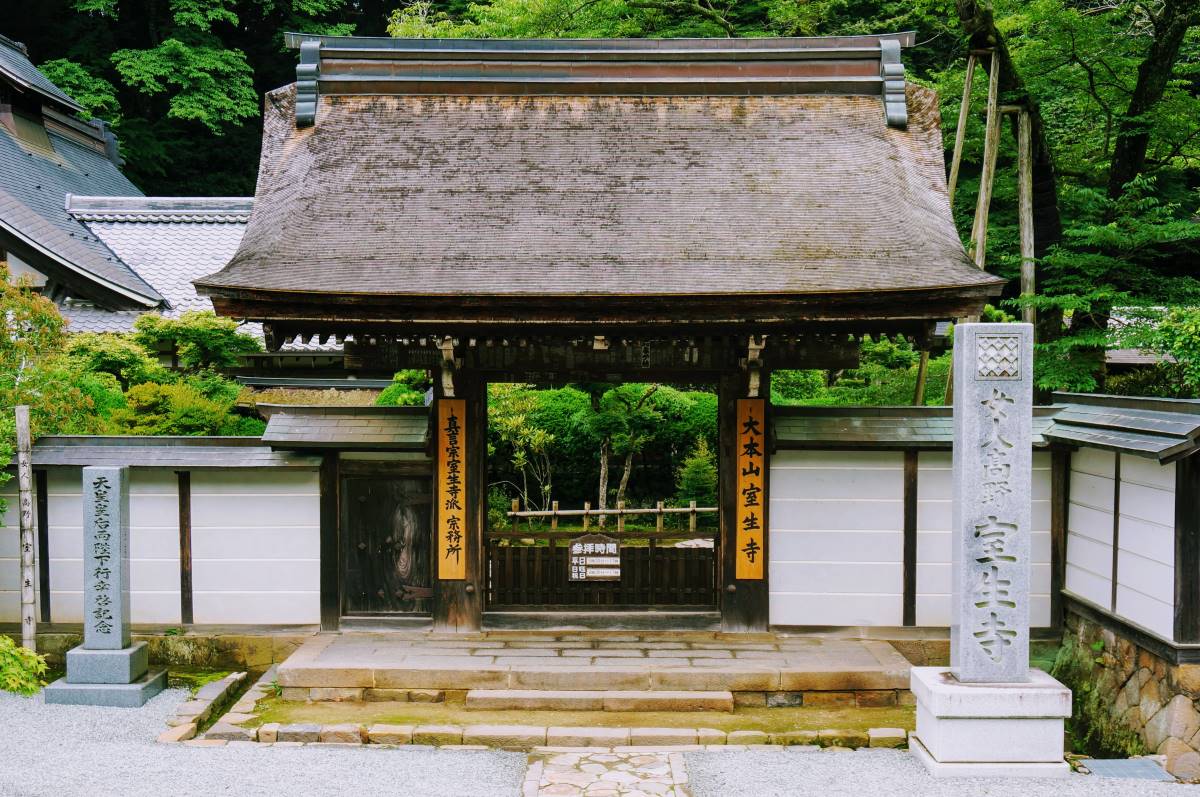
Murou-ji Temple is a mountain temple of the Shingon sect located in Uda City in Nara Prefecture. It was founded by Kenkyo (賢璟), a monk of Kofuku-ji (興福寺), at the end of the Nara period.
While Koyasan, the headquarters of the Shingon Sect had been strictly closed to women, Murou-ji Temple has allowed women to enter its precinct since relatively early times. For this reason, Murou-ji Temple is also called “Nyonin Koya (女人高野)” which means the Koyasan for women, and Murou-ji Temple has been popular among not only men but also women for a very long time.
First of all, I will introduce the way from Taikobashi (太鼓橋) to Gojunoto (Five-storied Pagoda, 五重塔).
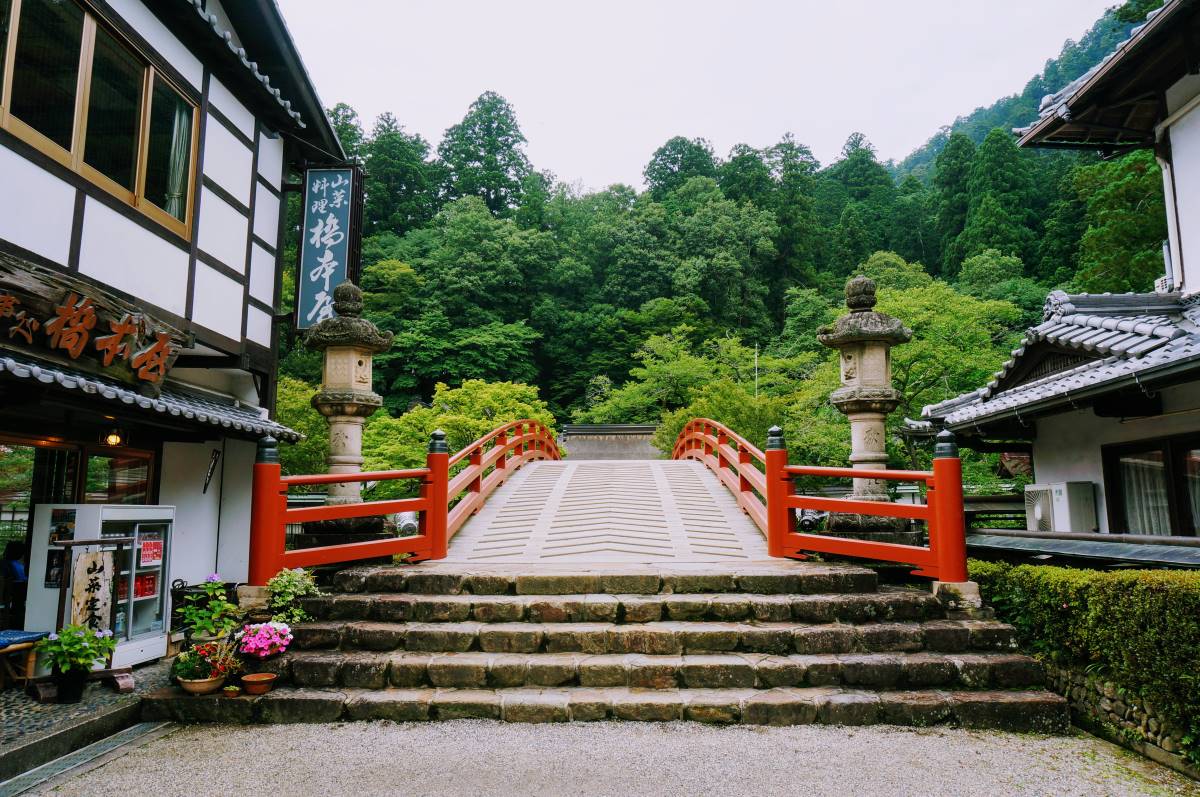
The vermilion-painted bridge which spans the Muro River is Taikobashi (太鼓橋), and this is the entrance to Murou-ji Temple. It will take about five minutes on foot from the bus stop “Murou-ji (室生寺)” to here.
You can walk toward the sign of the ryokan “Hashimotoya (橋本屋)”, then you will not be getting lost to reach here!
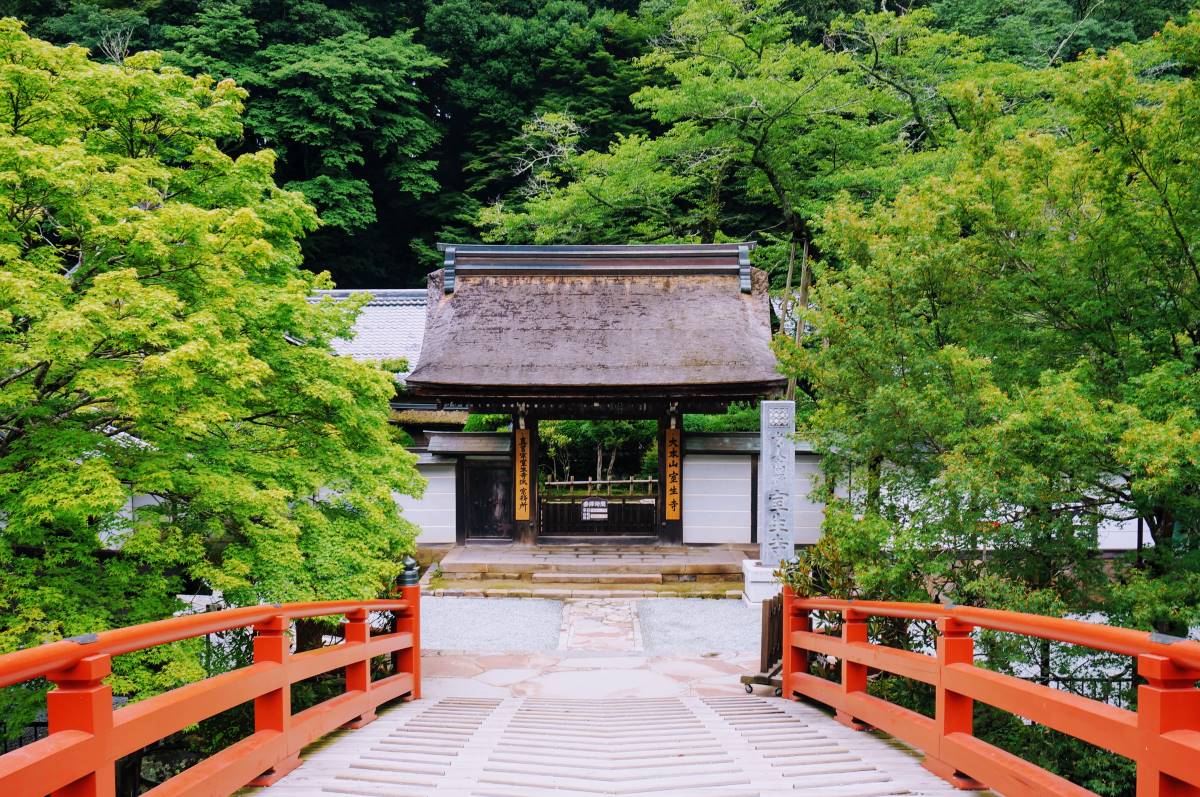
When you come to the middle of the bridge, you will see the Omotemon (front gate, 表門) of Murou-ji Temple.
This is a place that always welcomes travelers with beautiful scenery of each season, such as cherry blossoms, fresh green leaves, and autumn colors.
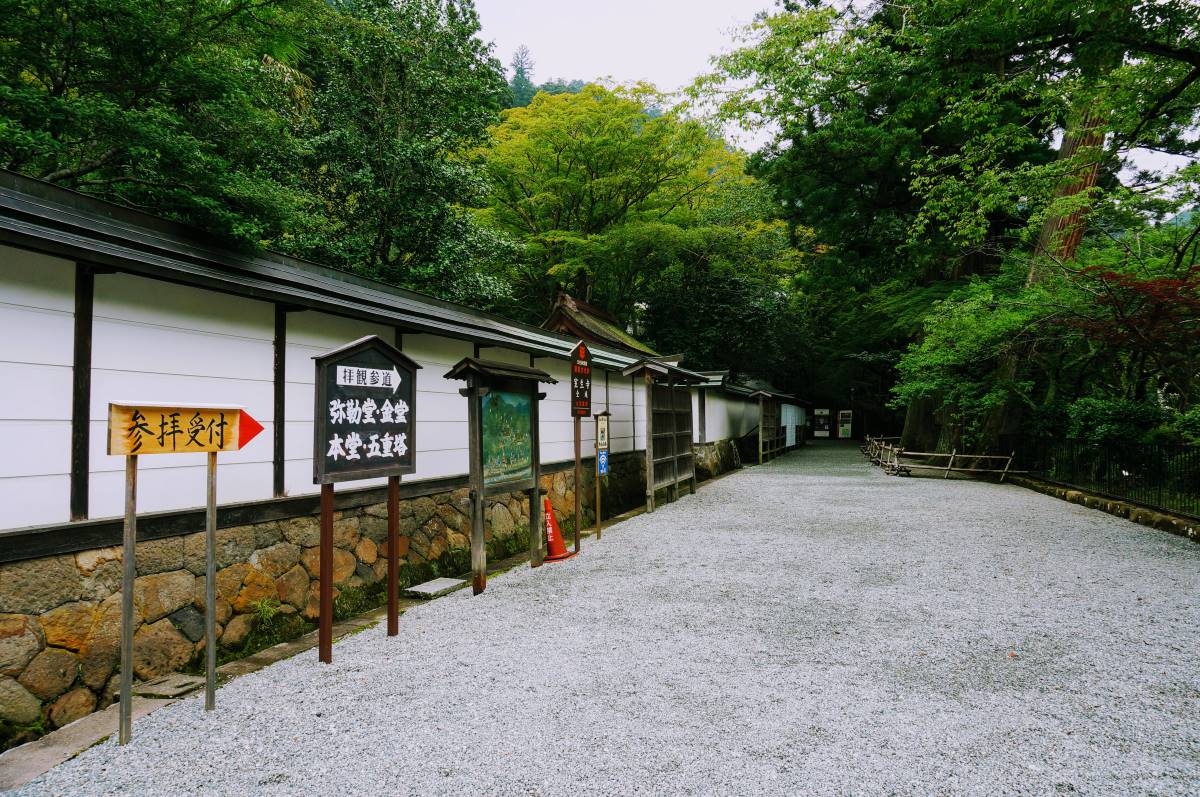
Since the Omotemon is usually closed, turn right and walk along the approach leading to the reception. Along the way, you can see three large cedar trees called Sanposugi (三宝杉) on your right side. You will be surprised at the power of nature when you look at the broad trunks of trees that cannot be held by even both arms of an adult.
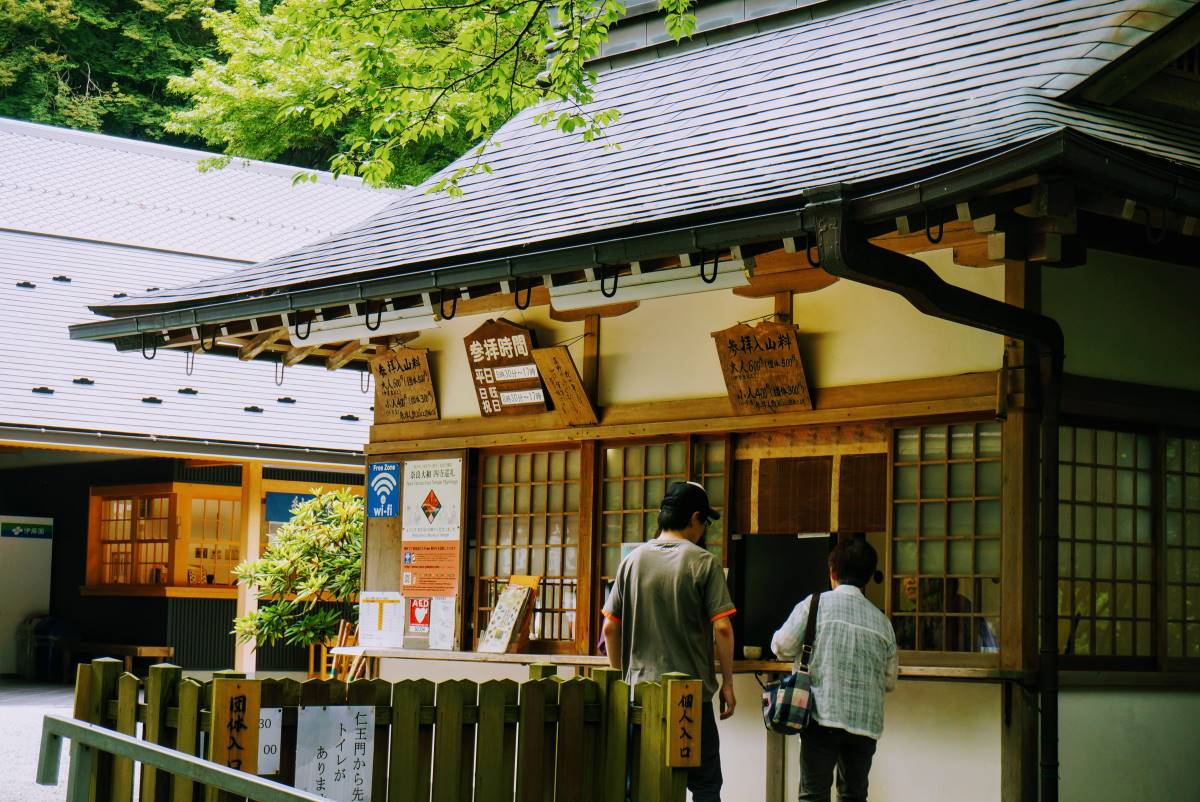
If you go straight down the approach for a while, you will see the reception where you need to pay the entrance fee. The admission fees are 600 yen for adults and 400 yen for children. You can receive a leaflet that briefly describes the buildings and history of Murou-ji Temple in English or Chinese.
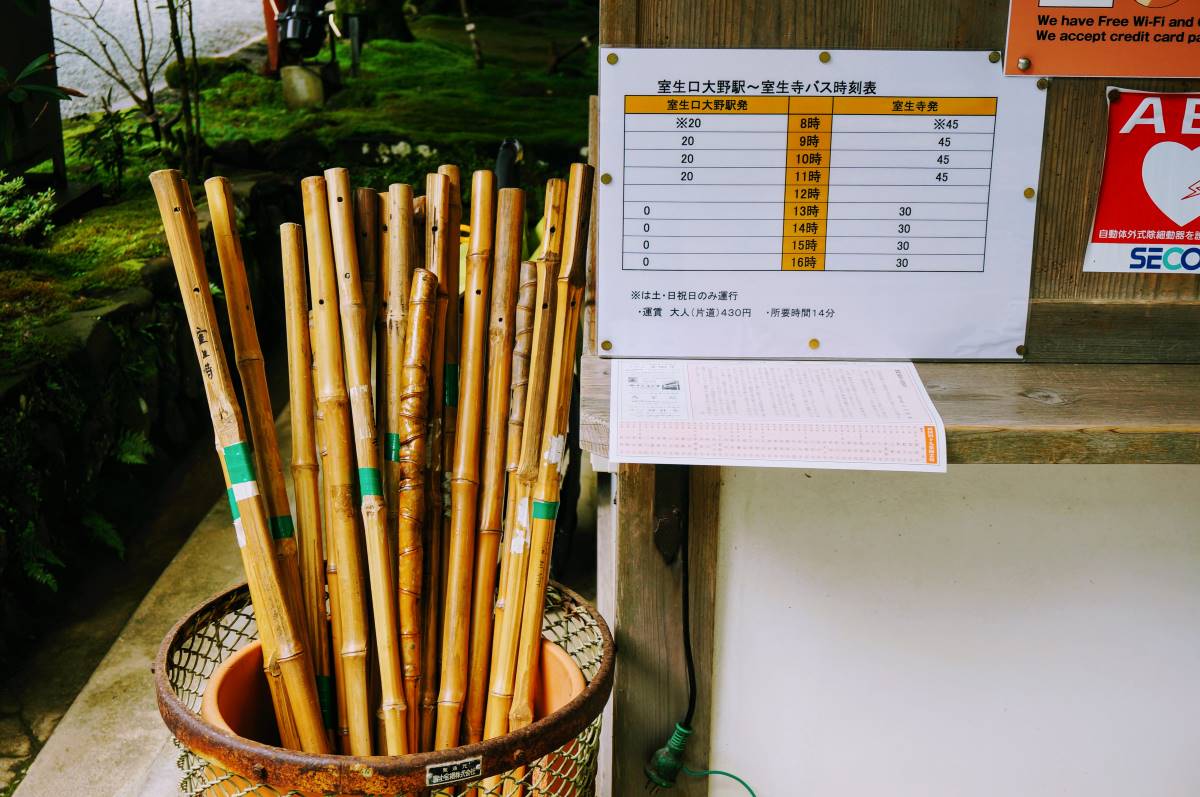
There are walking sticks on the side of reception, and you can borrow one to support your feet. Since Murou-ji Temple is built halfway up Mount Muro, you need to walk up about 700 stairs to reach the Okunoin (奥の院) which is the top highest and the deepest place of Murou-ji Temple.
Note: Before you go ahead, please don’t forget to check the timetable for your return bus. You can get the latest information on Muroji Temple - Nara Kotsu Bus.
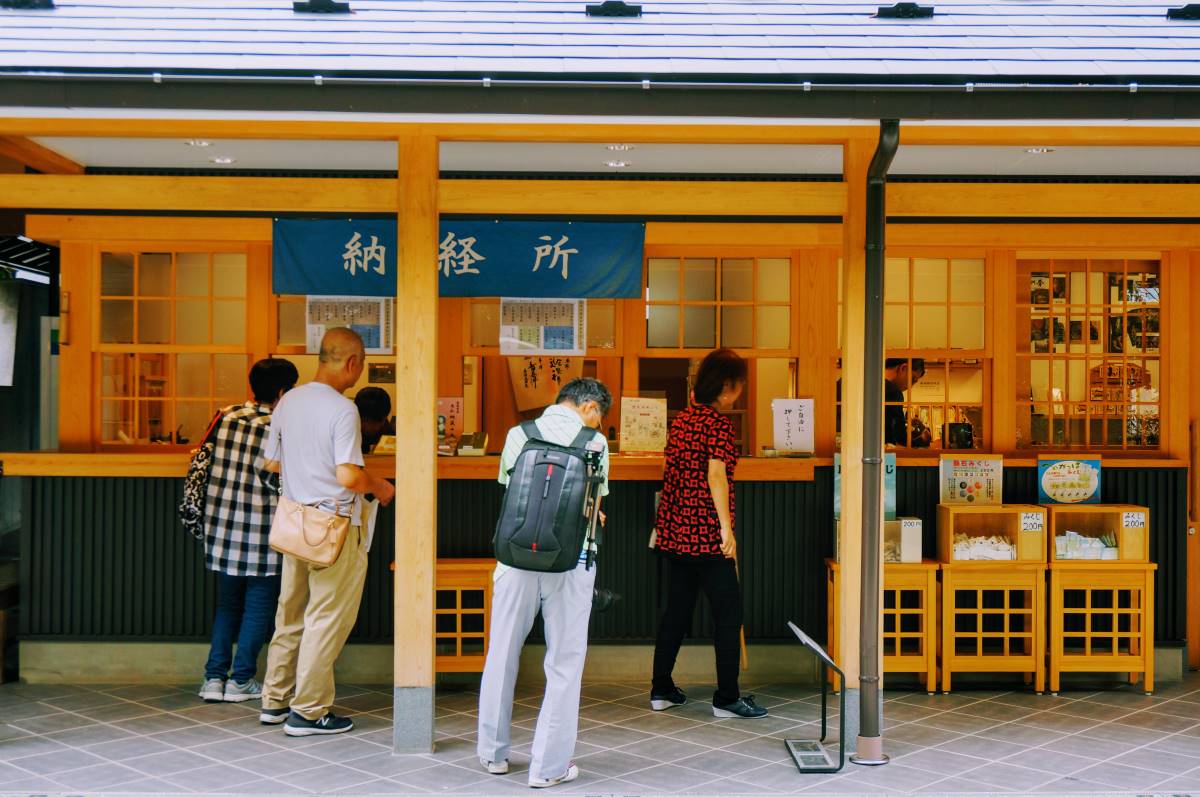
There is Nokyosho (納経所) within the temple ground, just in front of the Niomon gate, where you can receive a stamp called Goshuin (御朱印) from the temple. Also, you can buy many kinds of souvenirs, for example, amulets, incense, and key chains.
Note: Just a friendly reminder, there is a restroom on the left side of Nokyosho, and it is better to use it here because there will not be another one for a while.
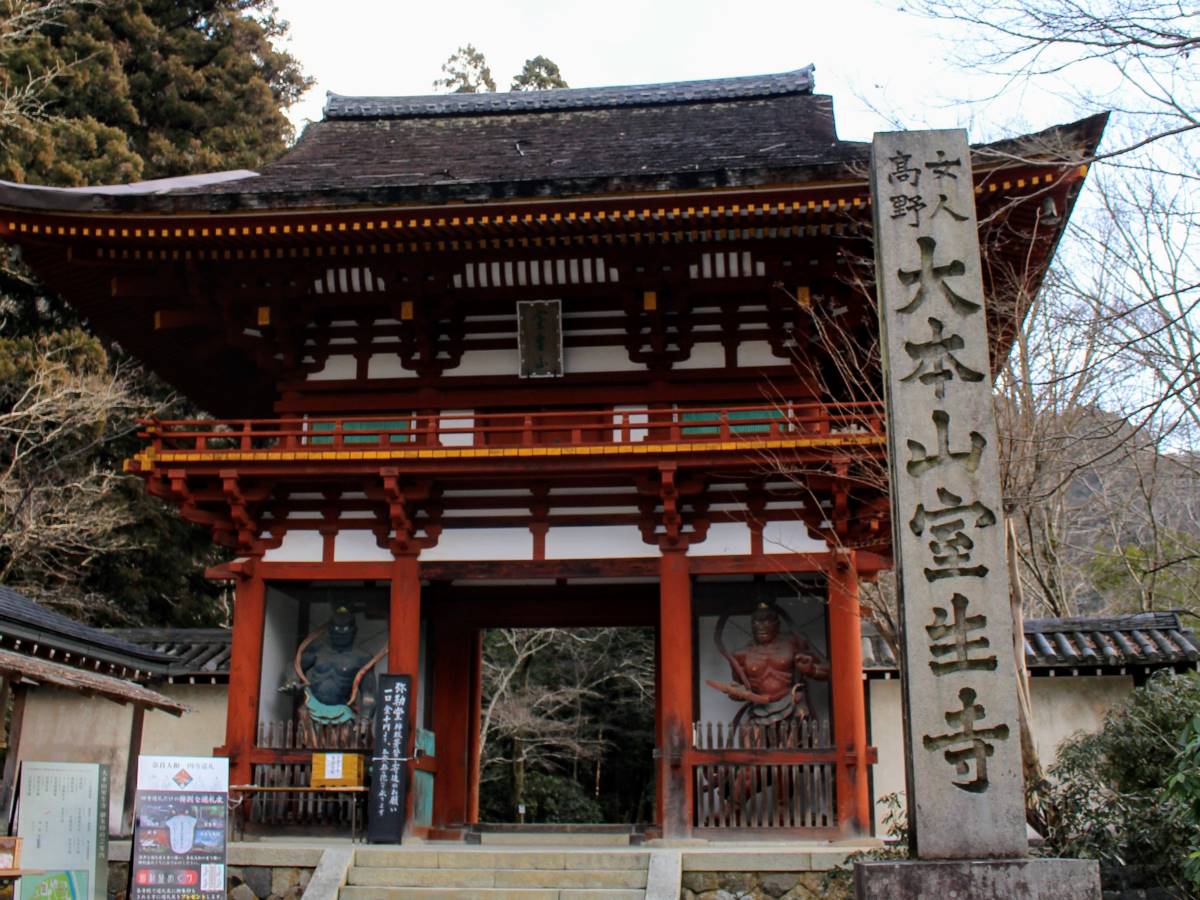
This is the Niomon (仁王門), the gate of the two Deva Kings. The two statues, on the left and right sides of the gate, guard and protect the temple against evil spirits.
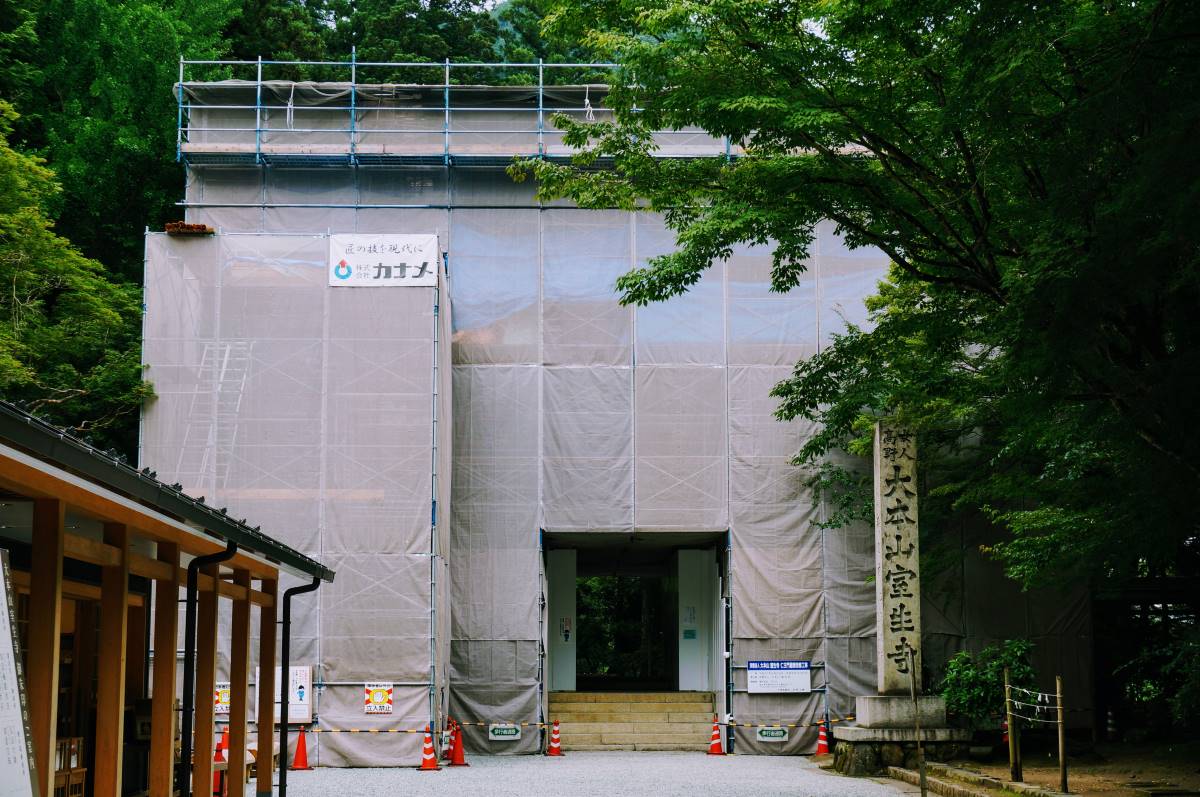
Actually, the Niomon will be under improvement work until October 11, 2019. Around the time when the work is finished, the beautiful autumn season will be just around the corner. Especially in the middle of November, you will be able to enjoy the beautiful collaboration of vivid autumn leaves and the Niomon.

As you walk through the Niomon, you will see the spectacular scenery created by rich nature. Murou-ji Temple is like a treasured place that is hidden in a large mountain.
In the center of the view, there are stone steps called Yoroizaka (鎧坂) made of natural rocks, and rhododendrons are planted on both sides of it. The flowers are in full bloom from late April to early May, and during that time, many travelers flock to see them from all over Japan.
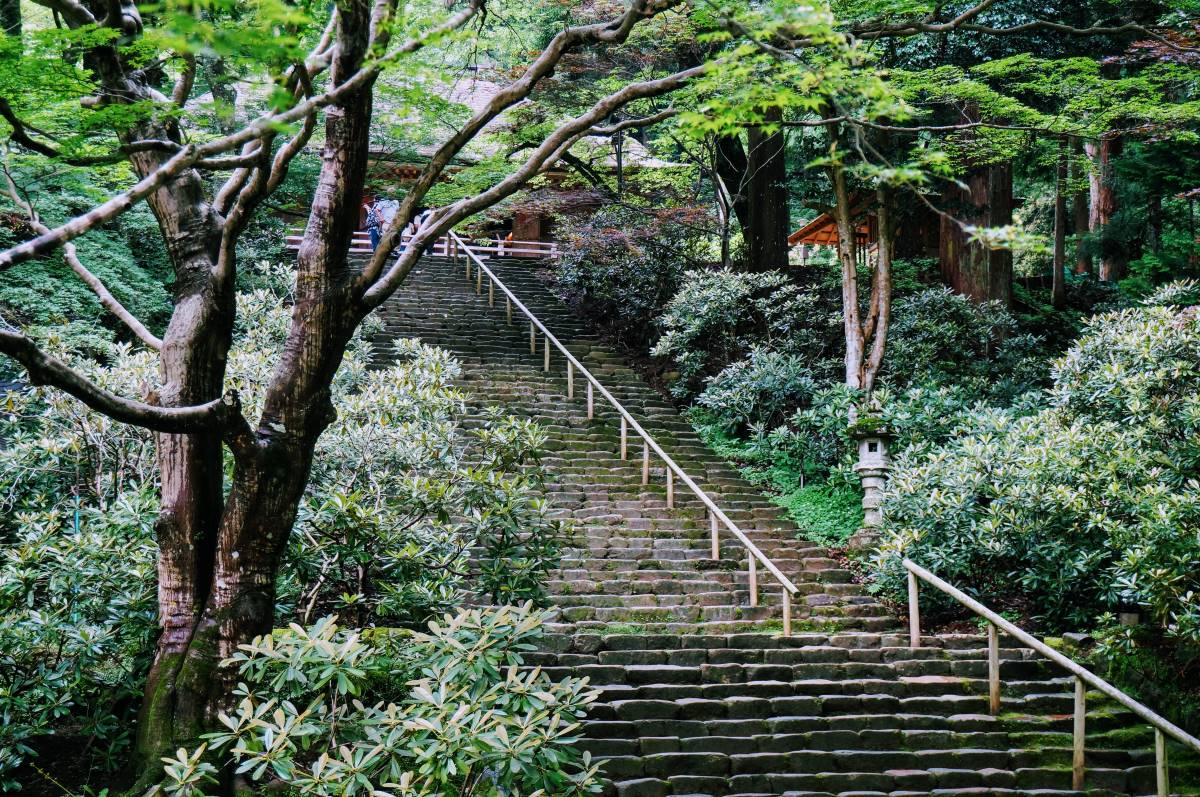
From here, your journey of walking up 700 stone steps will begin! Your first destination is the Kondo Hall (金堂) that you can see beyond the stairs.
Note: Since the steps are made of natural rocks, the steps are not flat but bumpy. I do recommend you wear comfortable sneakers.
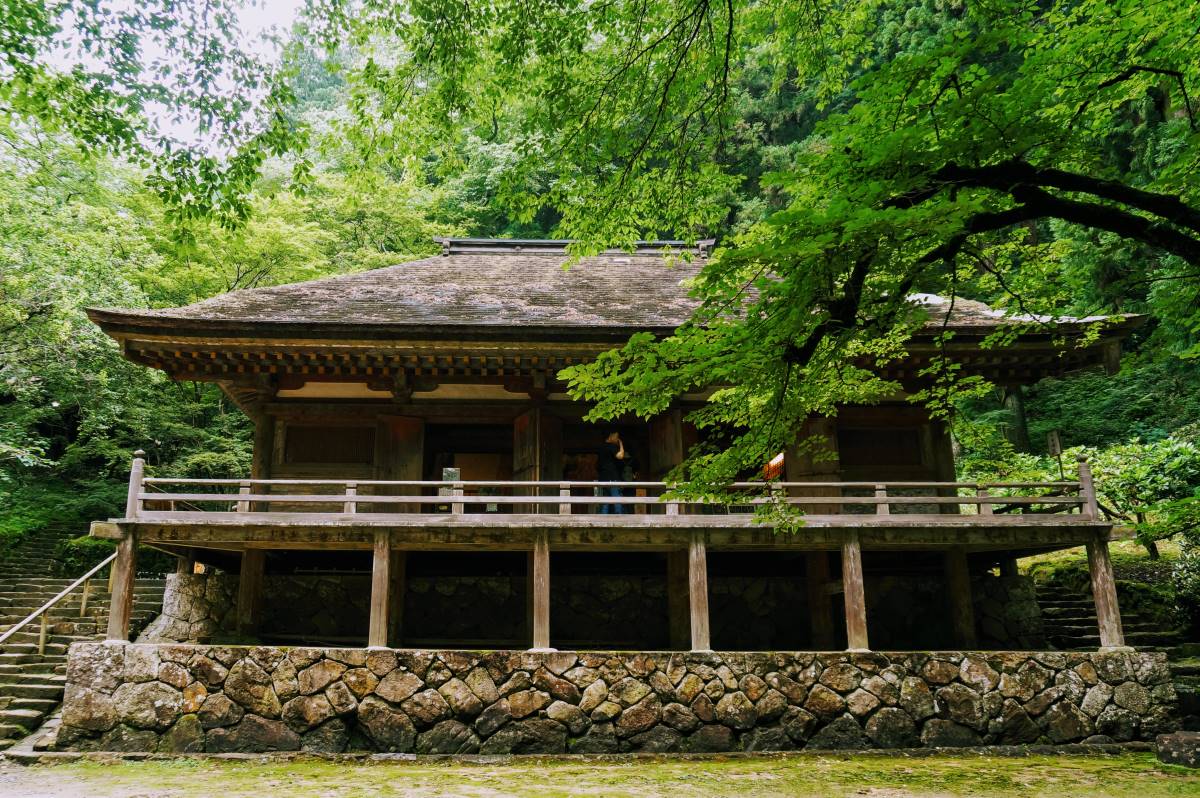
After climbing up the stone steps, you will see the Kondo Hall just in front of you. It was built in the Heian period (794-1185) and expanded in the Edo period (1603-1867), and now, it is designated as a National Treasure.
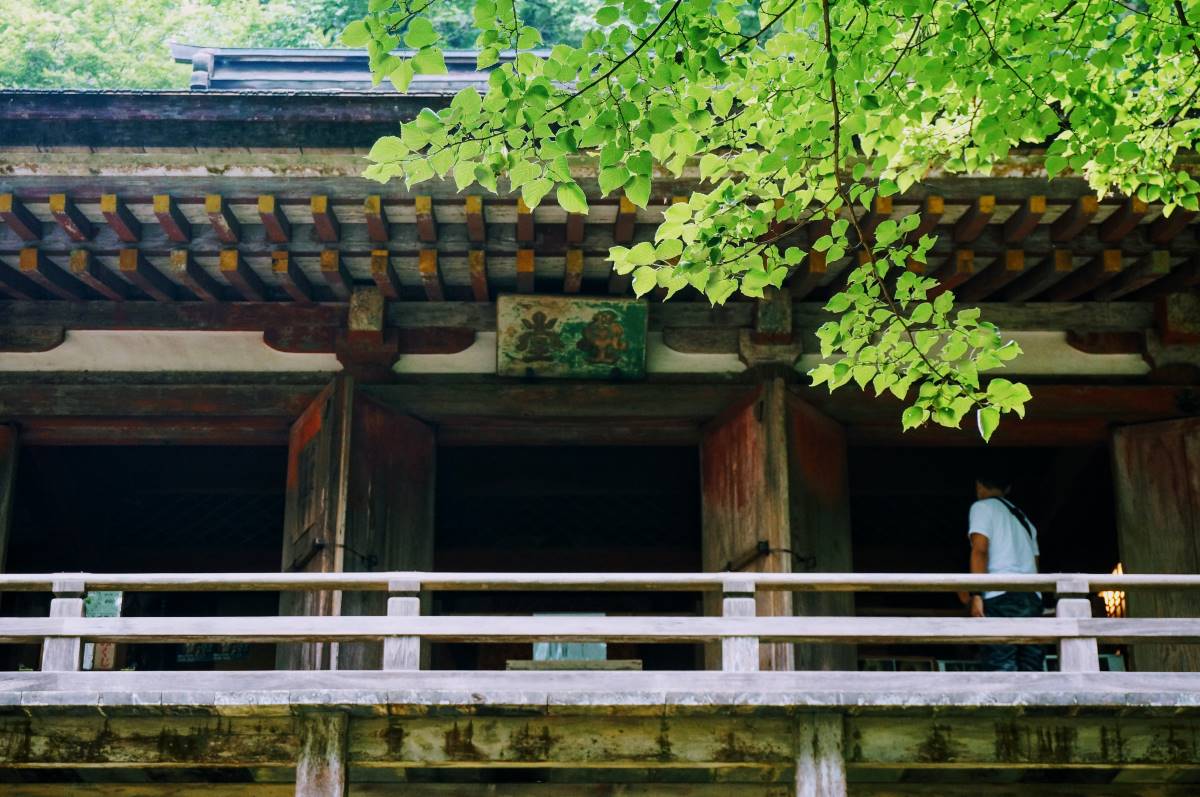
Five statues are enshrined in Kondo Hall. From the left, there are Eleven-headed Kannon Bosatsu (National Treasure, 十一面観音菩薩立像), Monju Bosatsu (Important Cultural Property, 文殊菩薩立像), Shaka Nyorai (National Treasure, 釈迦如来立像), Yakushi Nyorai (Important Cultural Property, 薬師如来立像), and Jizo Bosatsu (Important Cultural Property, 地蔵菩薩立像).
Moreover, Juni Shinsho (Important Cultural Property, 十二神将), statues of 12 protective deities are enshrined in there too. Each sculpture has an animal symbol of the oriental zodiac on its head. It is very interesting to see their dynamic and unique expressions that are different from each other.
Note: Taking photographs of the statues and inside of the halls is prohibited, so I cannot show you all the wonderfulness that I have experienced here. Please come visit Murou-ji Temple by yourself, and feel the great ambiance inside of the halls!

There is the Mirokudo Hall (弥勒堂) on the left side of the Kondo Hall. It was built in the Kamakura period (1185-1333), and now it is designated as an Important Cultural Property.
Miroku Bosatsu (Important Cultural Property, 弥勒菩薩像) stands in the center of the hall, and Shaka Nyorai (National Treasure, 釈迦如来坐像) stands beside it. These wooden carved statues were made in the early Heian period (794-1185), and they are one of the oldest statues in Murou-ji Temple.
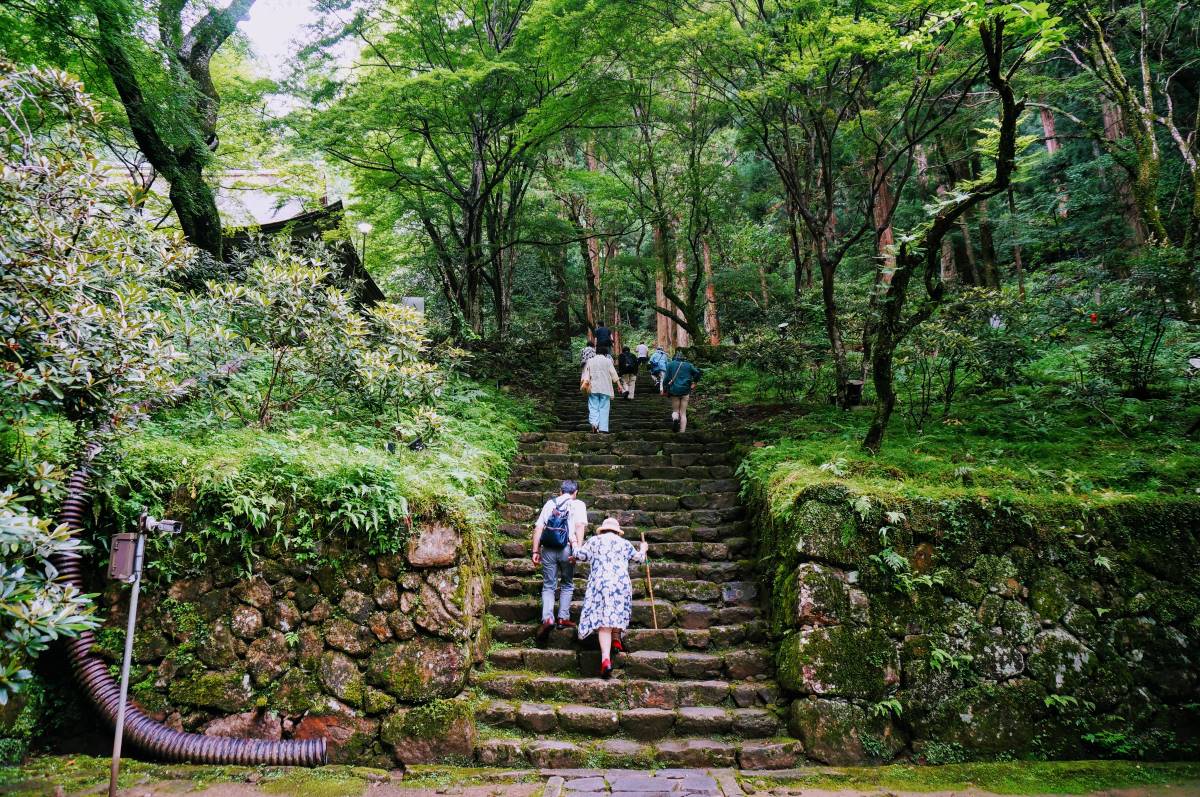
After leaving the Mirokudo Hall, let’s climb further up the stairs. There are stone steps everywhere in Murou-ji Temple, so walk up at your own pace, taking a rest.
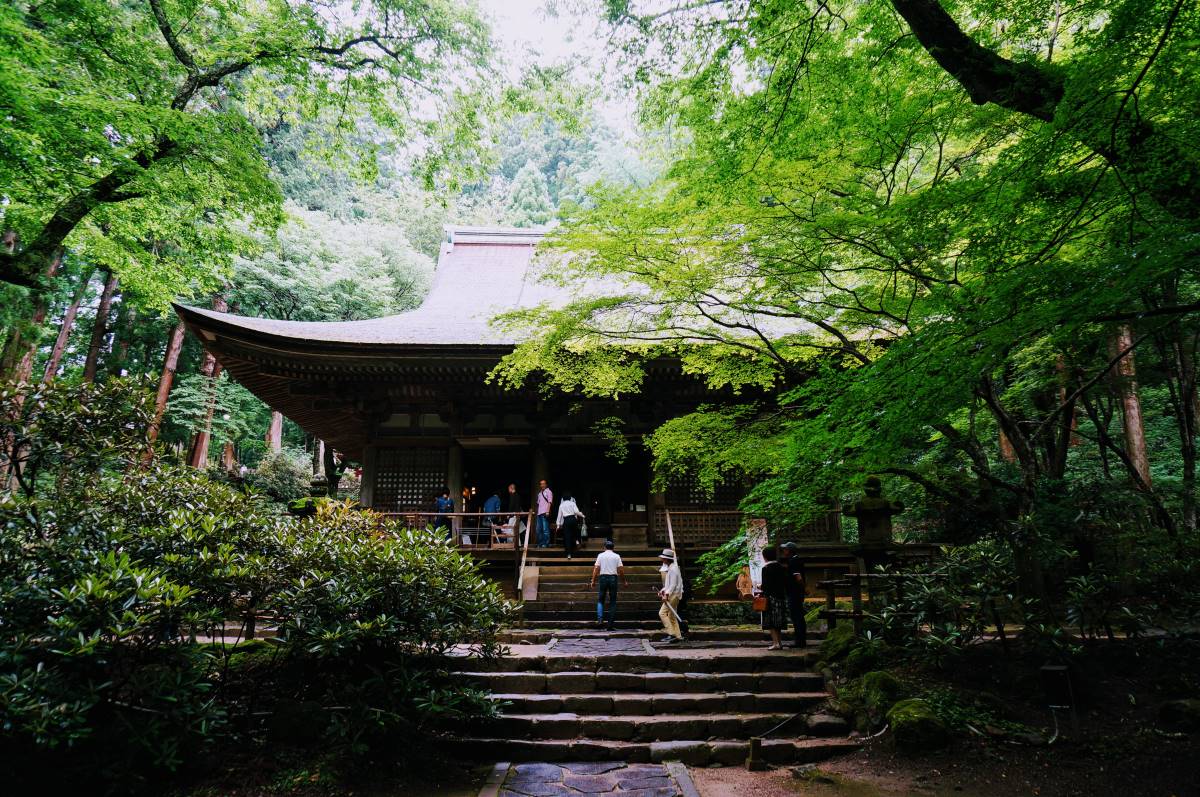
After you go up the stone steps, you will see the Kanjodo Hall (灌頂堂), the main hall of the Murou-ji Temple. It was built in the Kamakura period (1185-1333), and now, it is designated as a National Treasure.
Kanjodo Hall is a place for performing significant rituals of the Shingon sect named Kanjo (灌頂). Among the several types of Kanjo, Kechien Kanjo (結縁灌頂) is the most typical and introductory ceremony, and that is a ritual to connect people with Buddha. A blindfolded person tosses a shikimi (Japanese star anise) to a mandala (a diagram that depicts Buddhist deities), and the person will be considered to get a connection with the Buddha that the shikimi falls on.
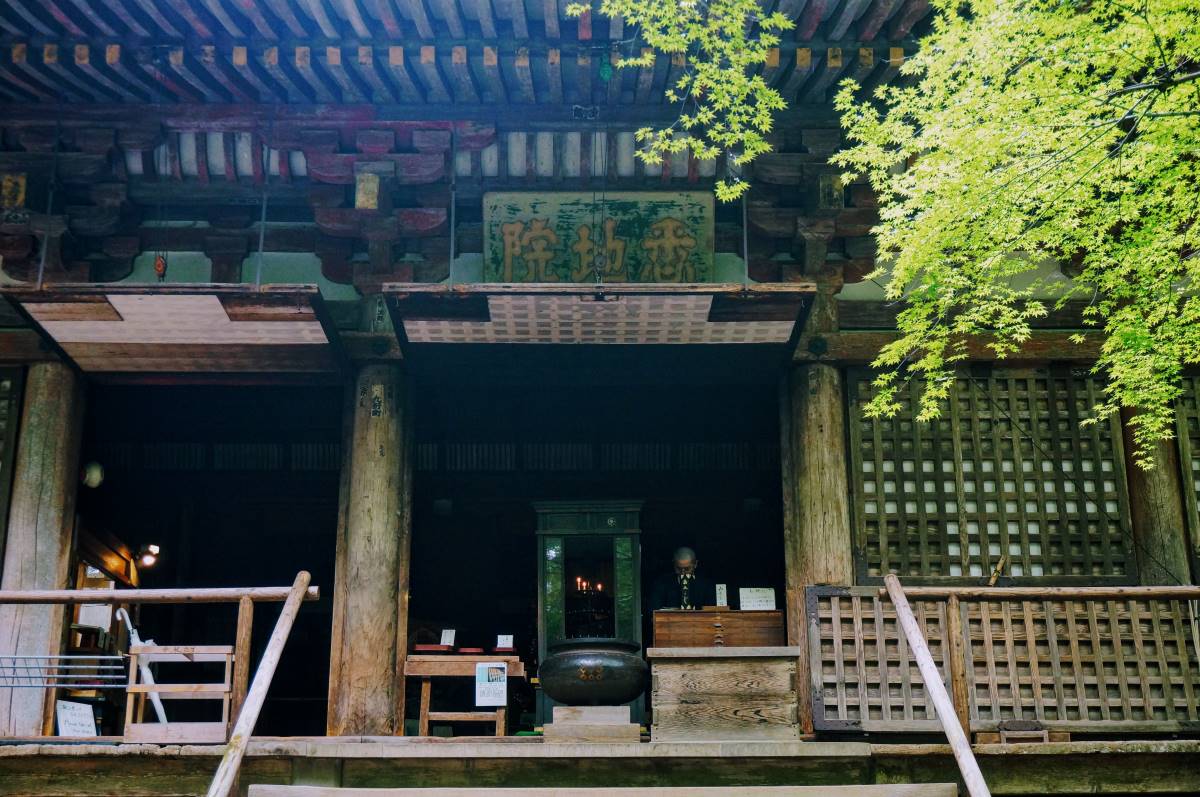
Kanjodo Hall enshrines Nyoirin Kannon Bosatsu (Important Cultural Property, 如意輪観音菩薩), and it is famous for one of the three great statues of Nyoirin Kannon Bosatsu in Japan. The others are in Kanshin-ji Temple (観心寺) in Osaka and Kanno-ji Temple (神呪寺) in Hyogo.
You can enter the Kanjodo Hall with your shoes off, and you can sit down to pray to Buddha. When you face the Buddha in the dimly lighted hall, you would be able to organize and calm your mind.

If you look up at the top of the stone steps just past the Kanjodo Hall, you will see the Gojunoto (五重塔), the Five-storied Pagoda. It was built in the Heian period (794-1185), and now it is designated as a National Treasure. The Gojunoto is about 16.1 meters high, and this is the smallest outdoor five-storied pagoda in Japan.
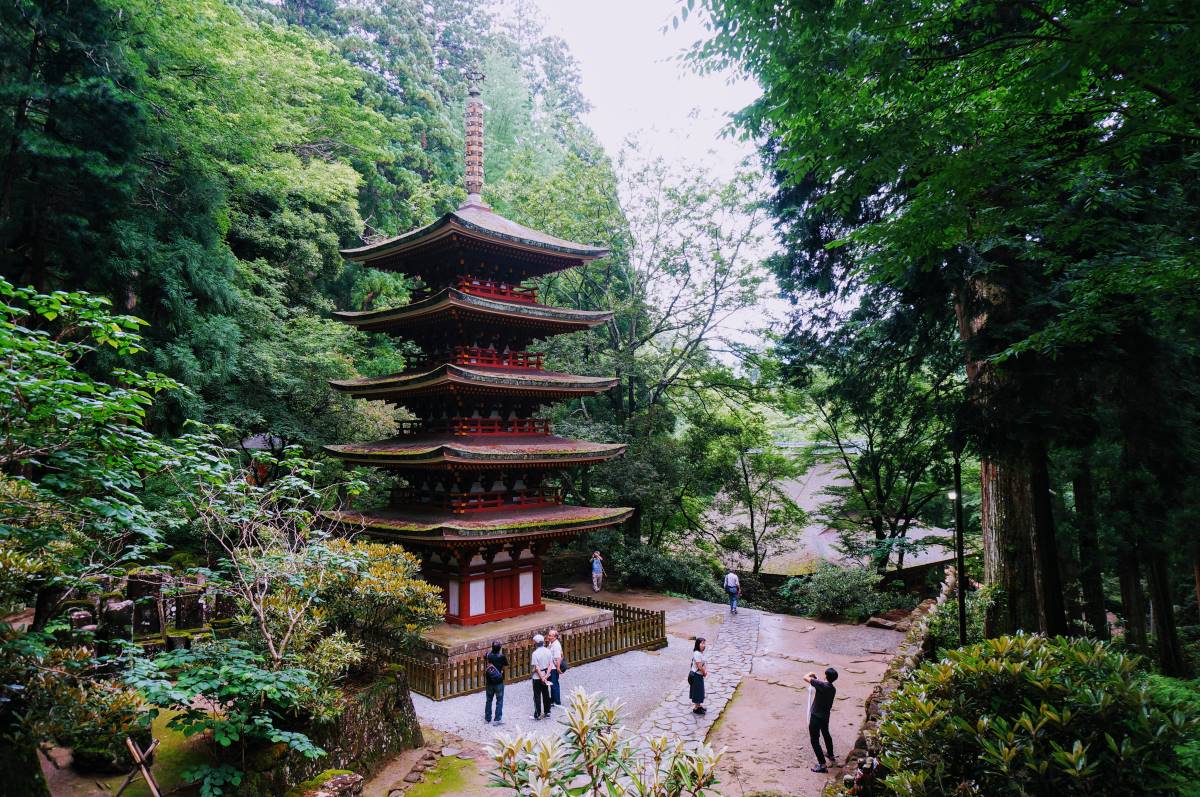
Actually, in 1998, the Gojunoto was heavily damaged by a typhoon. Due to the strong winds, a huge tree knocked down to the Gojunoto, and all the five roofs of the pagoda were seriously vandalized. But the Gojunoto was restored perfectly over two years and a half, thanks to the supports from the government and all around Japan.
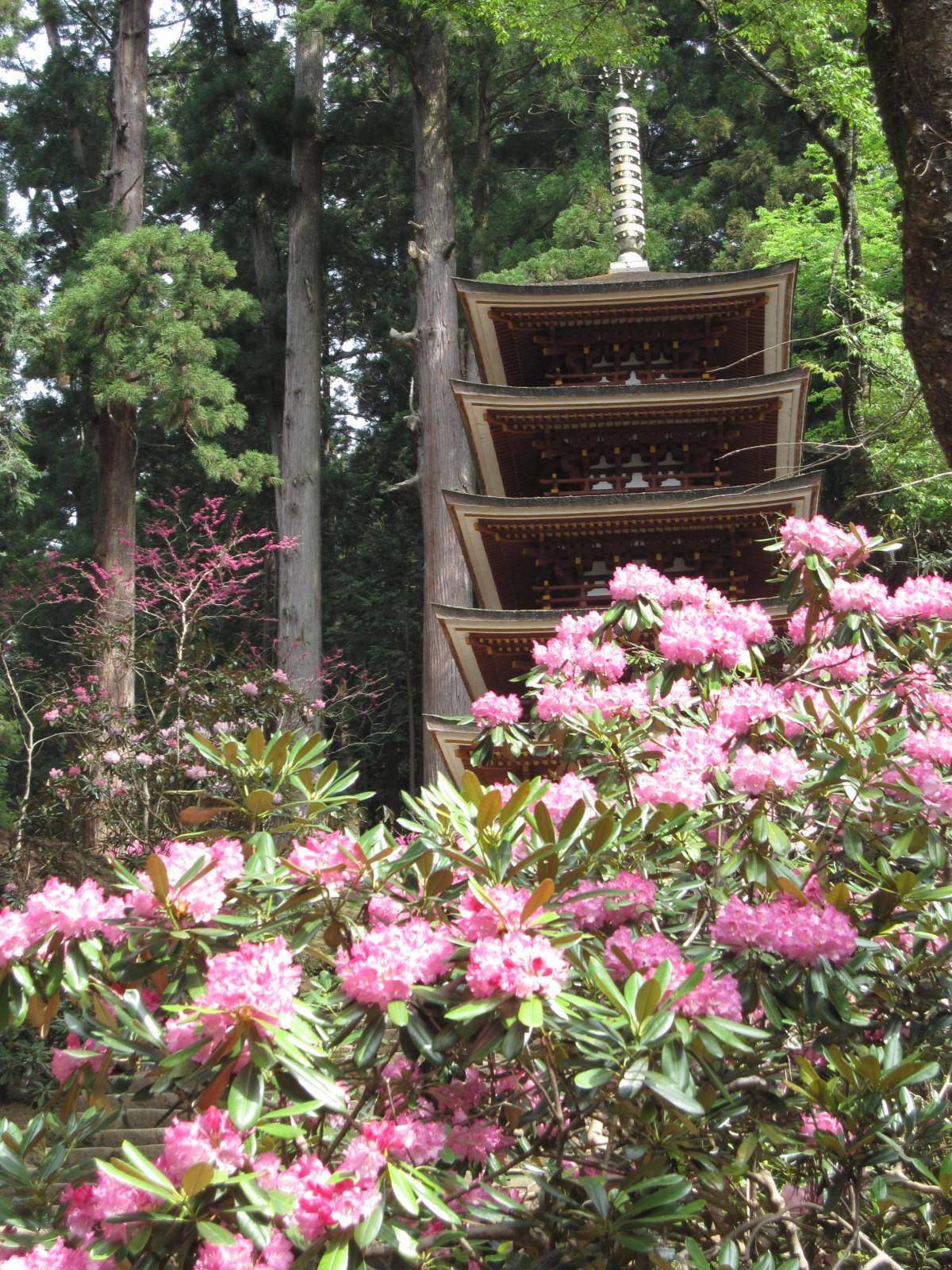
The Gojunoto, a symbol of the Muro-Ji Temple, has been attracting all visitors for centuries. When you look at it, you would feel the stormy history that the pagoda has gone through in the long history.
You can also enjoy the beautiful scenery of the rhododendrons collaborated with the pagoda from late April to early May. It is one of the best seasons to take photographs in Murou-ji Temple.
Going to the ”Okunoin” located deep in the Mountain
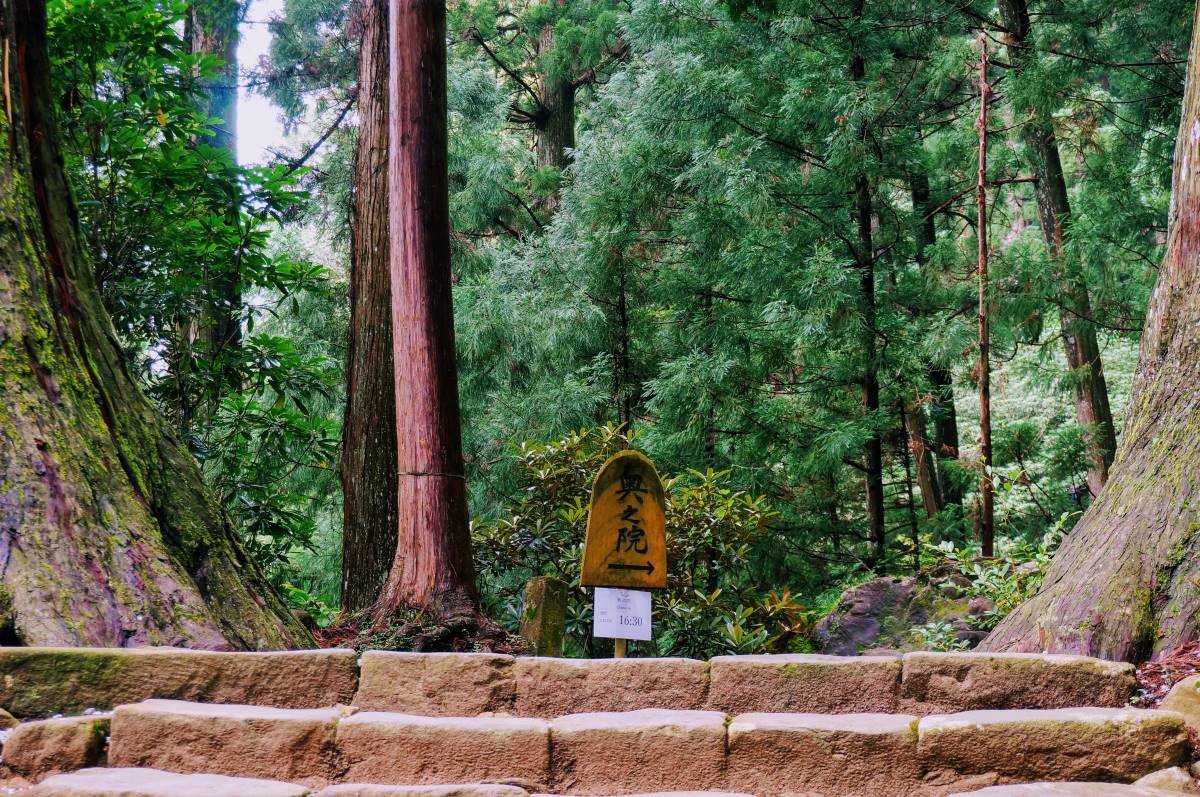
From here, I will introduce the way to the Okunoin (奥の院), a deeper spot in the Murou-ji Temple. After climbing up the stone steps ahead of the Gojunoto, you will see a new trail on your right side. That is the way that leads you to the Okunoin.
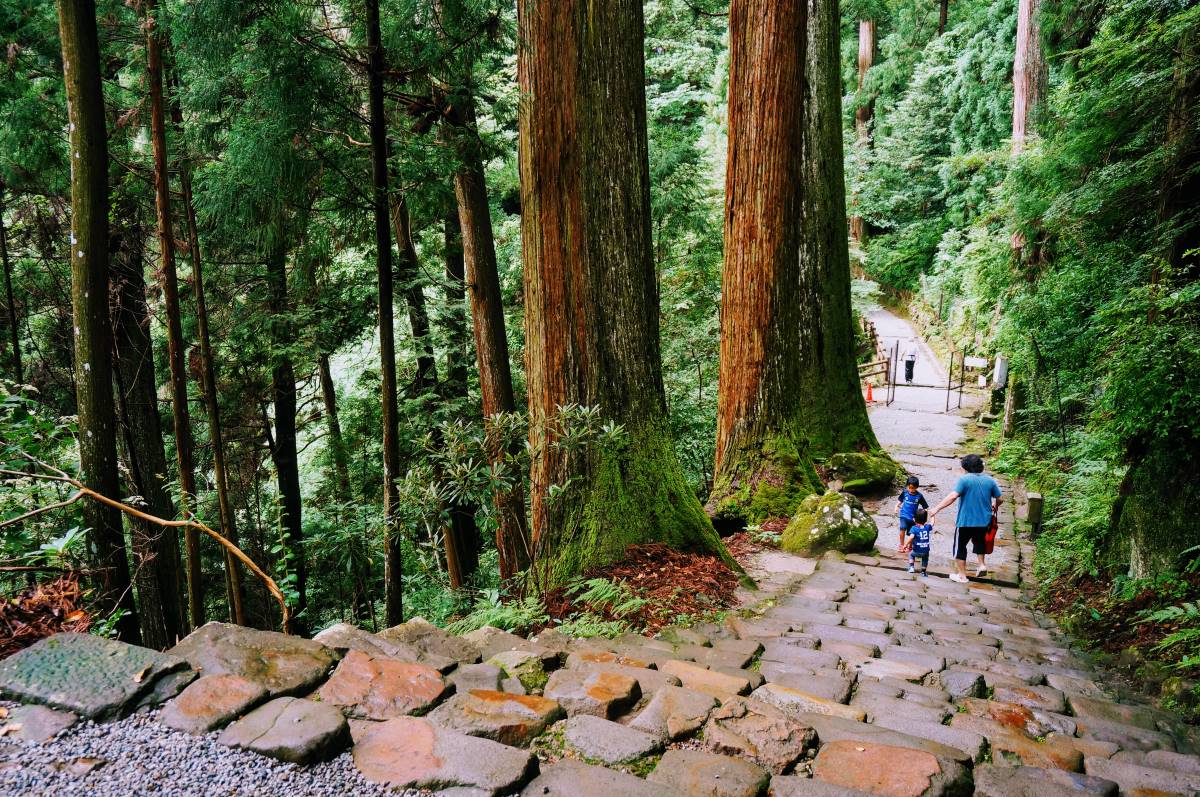
Let's go forward along the mountain path surrounded by cedar trees. The rich nature will make you feel relaxed.
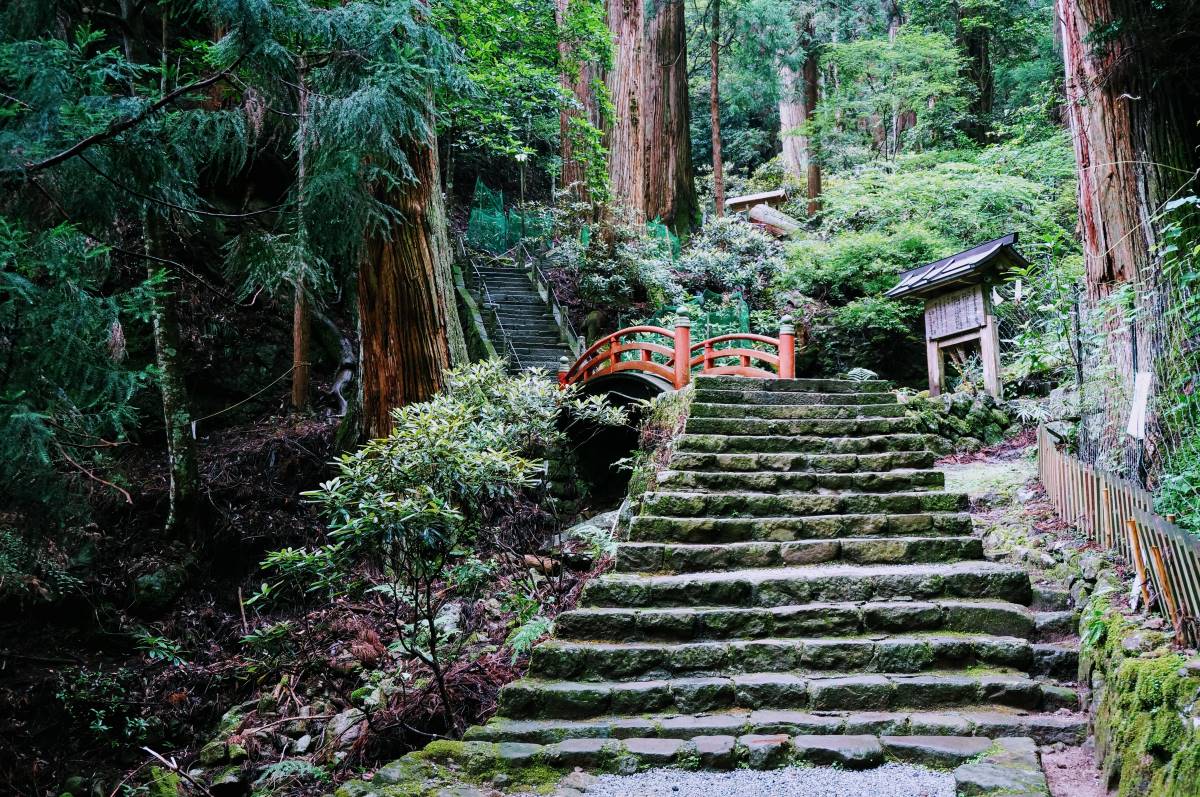
The vermillion-painted bridge is called Mumeikyo (無明橋), and there is a fern habitat on its right side. The habitat is designated as a National Nature Treasure, and you can see rare ferns favoring the warm climate that originally grow in Shikoku or Kyushu region in southwest Japan.
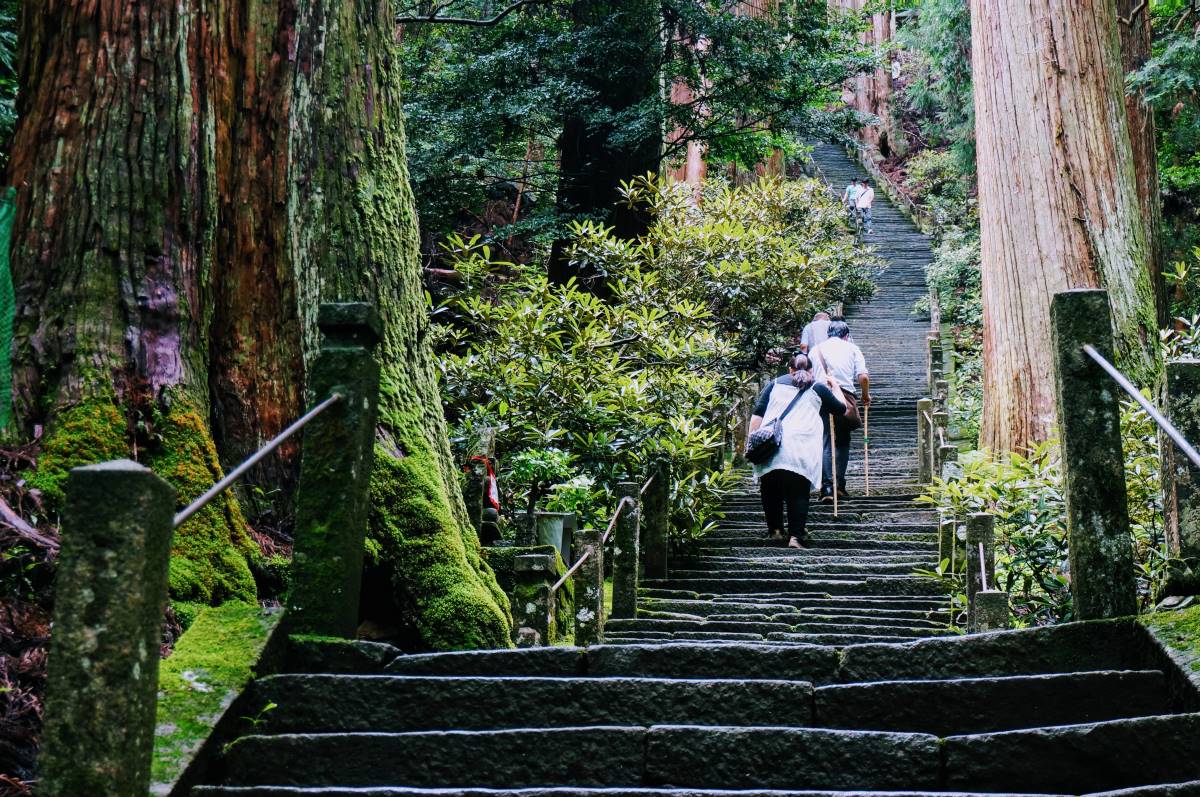
After passing through the Mumeikyo, you will see about 370 stone steps waiting for you! Please be careful not to fall because the stairs are steep, and also each step is very narrow.
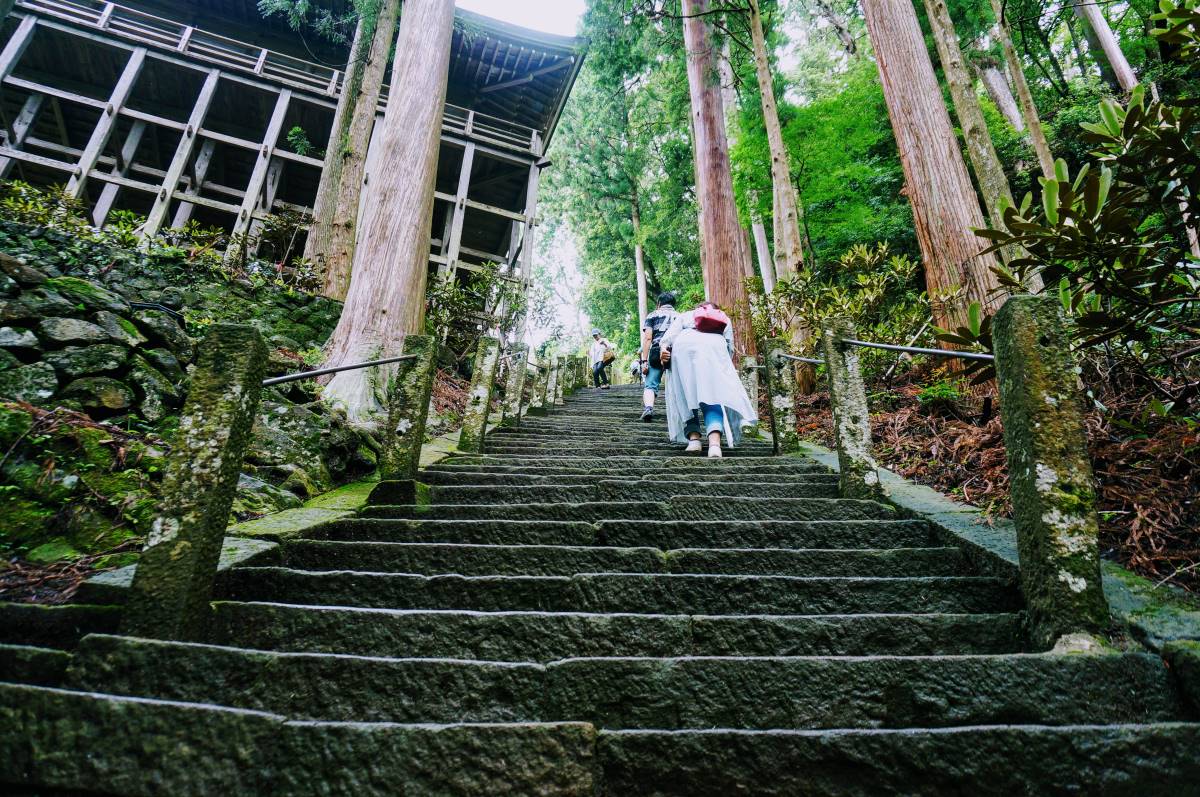
If you see a building constructed with wooden pillars on your left side, your final destination Okunoin is almost there. Most visitors came around here sweating, and also they were out of breath due to the steep stairs!
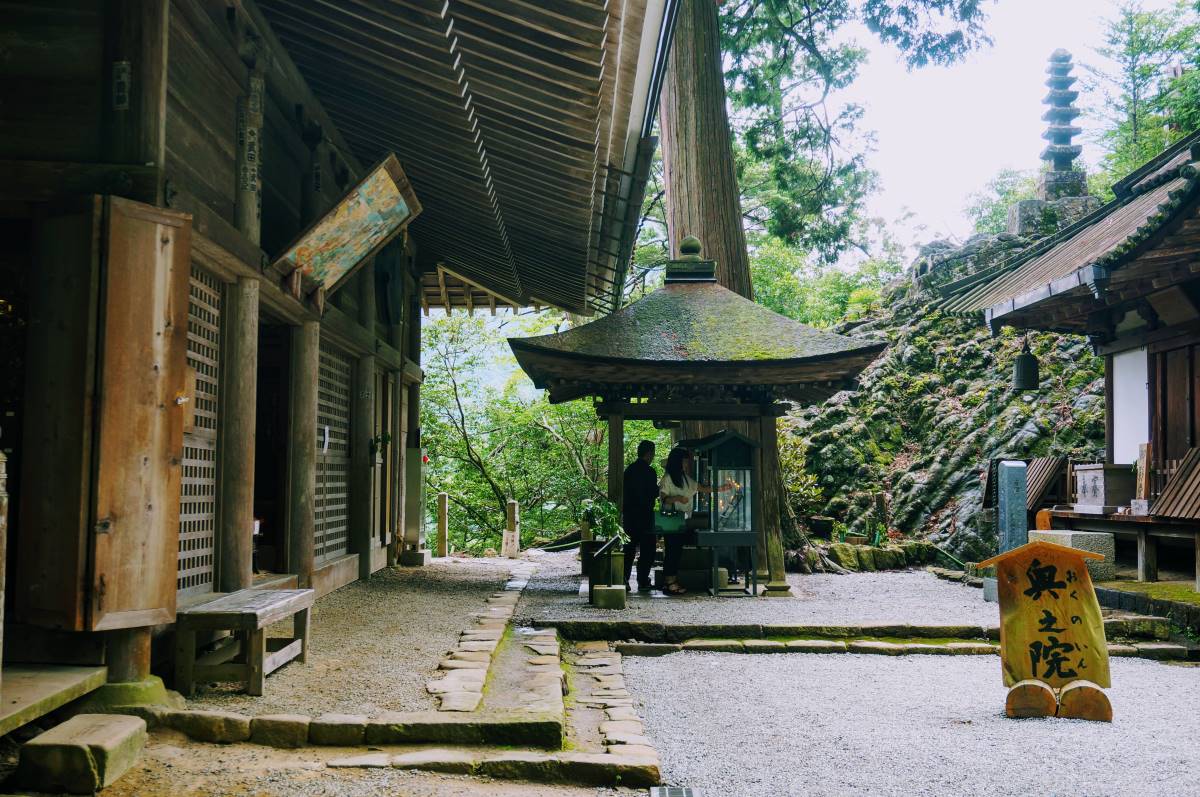
After climbing up 700 stone steps in total, you will finally arrive at Okunoin. In my case, it took about 15 minutes from the Gojunoto to Okunoin. If you are not worried about your physical strength, I recommend you walk up to here so that you can feel a sense of accomplishment!
The building on the left side of the picture above is the Jotodo Hall (常燈堂) or also called Ihaido Hall (位牌堂), where Buddhist memorial tablets are enshrined. There are some benches around the hall so you can take a break here.
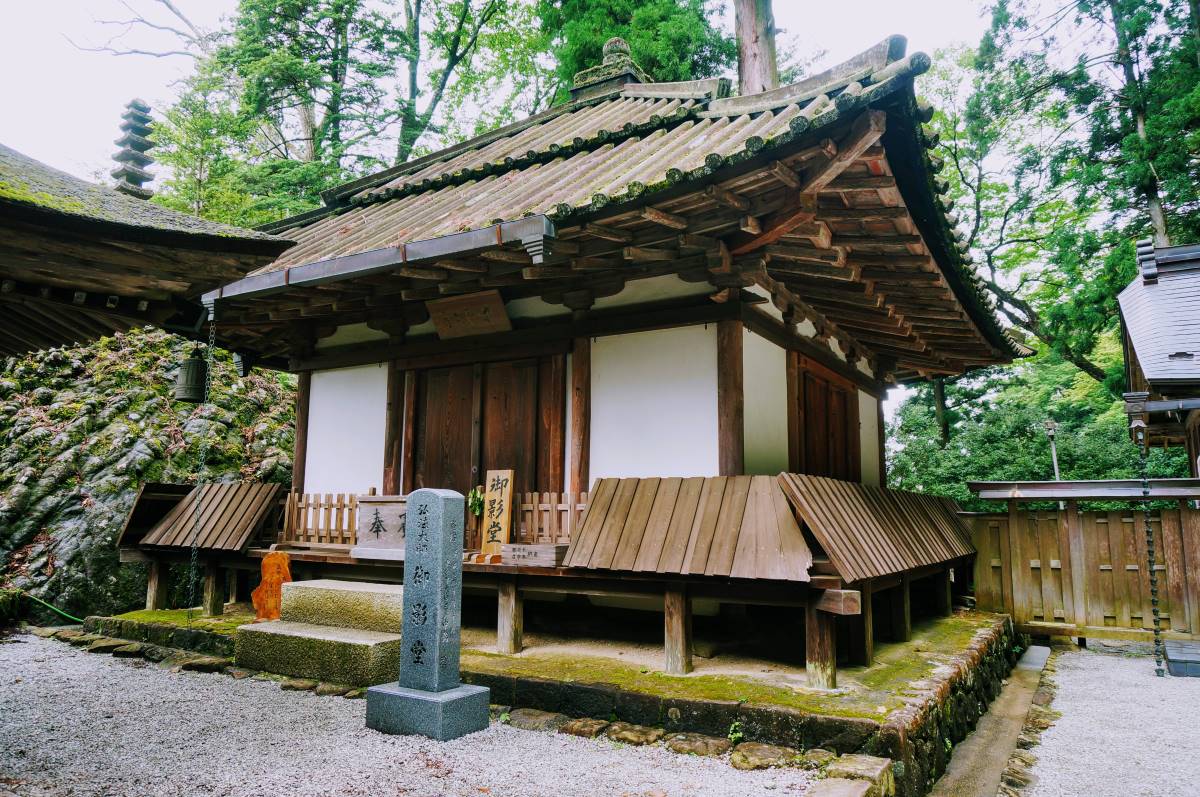
In front of the Jotodo Hall, there is the Mieido Hall (御影堂) that enshrines Kobo Daishi, the founder of the Shingon sect. It was built in the Kamakura period (1185-1333), and now, it is designated as an Important Cultural Property. The statue of Kobo Daishi is usually unveiled on the 21st of every month.
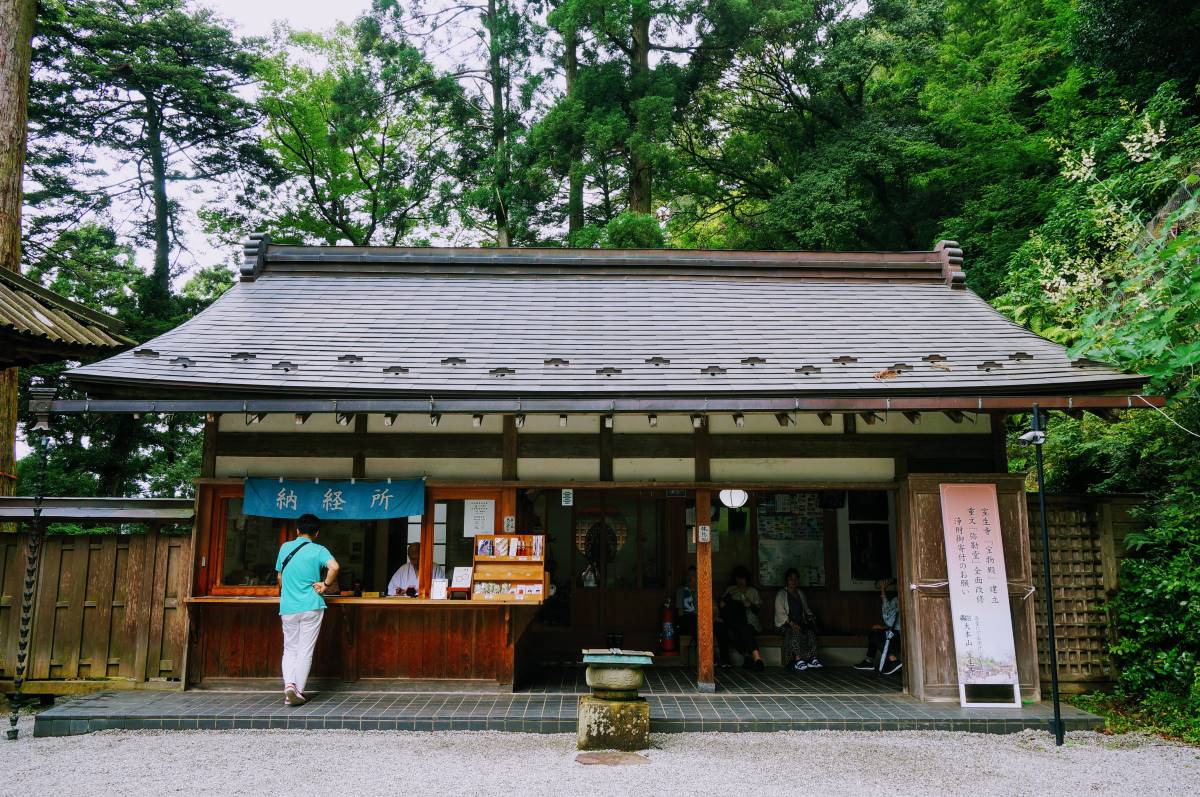
This is the Nokyosho (納経所), where you can receive a stamp called Goshuin that is available only here at “Okunoin”.
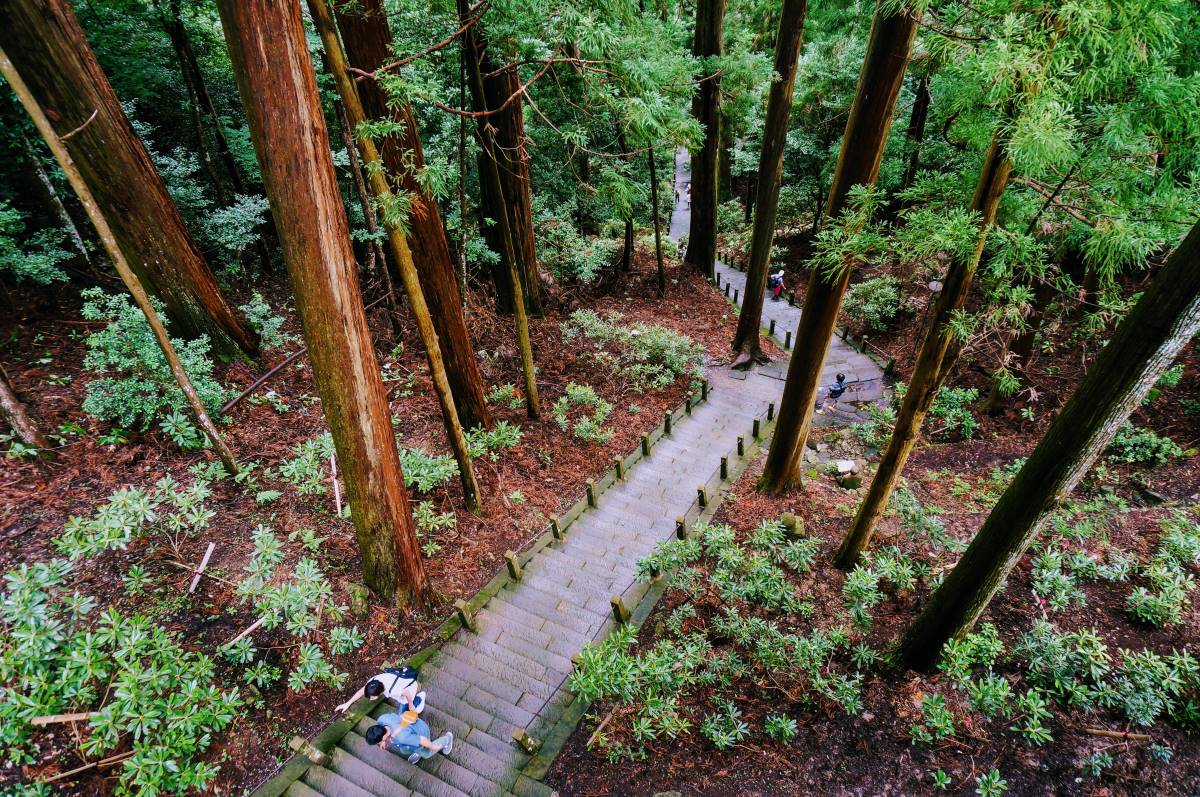
Before you go down the stone steps, take a look down the trails you have walked from the stage of Jotodo Hall. There is a wonderful view that only those who have arrive at Okunoin can see. You can feel anew the admirability of Murou-ji Temple that coexists with vast nature.
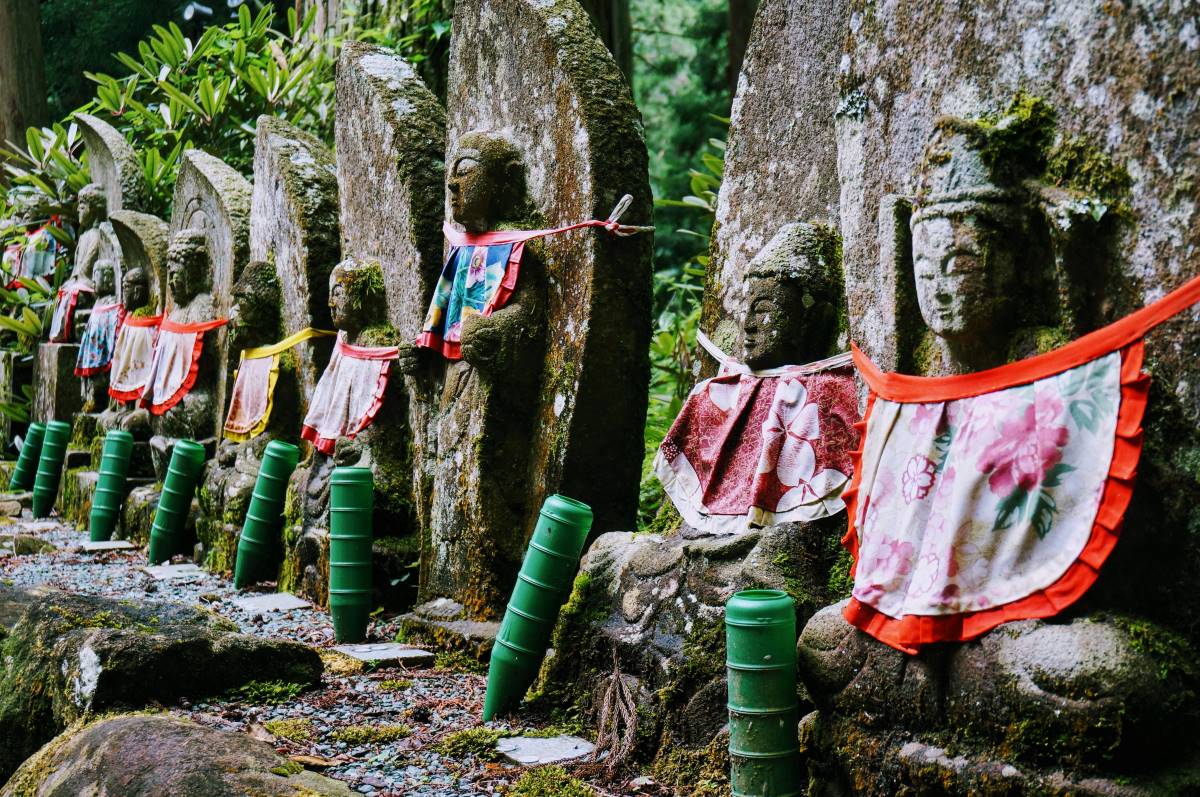
In Uda, many historical temples and shrines preserve the long history and thoughts of its predecessors, and Murou-ji Temple is no exception. You will never regret coming to this sacred place, where you can see and feel a lot of charm that can't be found in any other places but here in Murou-ji Temple.
Address 78 Muro, Uda City, Nara Prefecture
Hours 8:30 AM to 5:00 PM (April to November), 9:00 AM to 4:00 PM (December to March)
Admission Fee Adults: 600 yen, Children: 400 yen
Links
Murou-ji Temple Travel Guide #1
Mujo-ji Temple Offical Website (Japanese)
